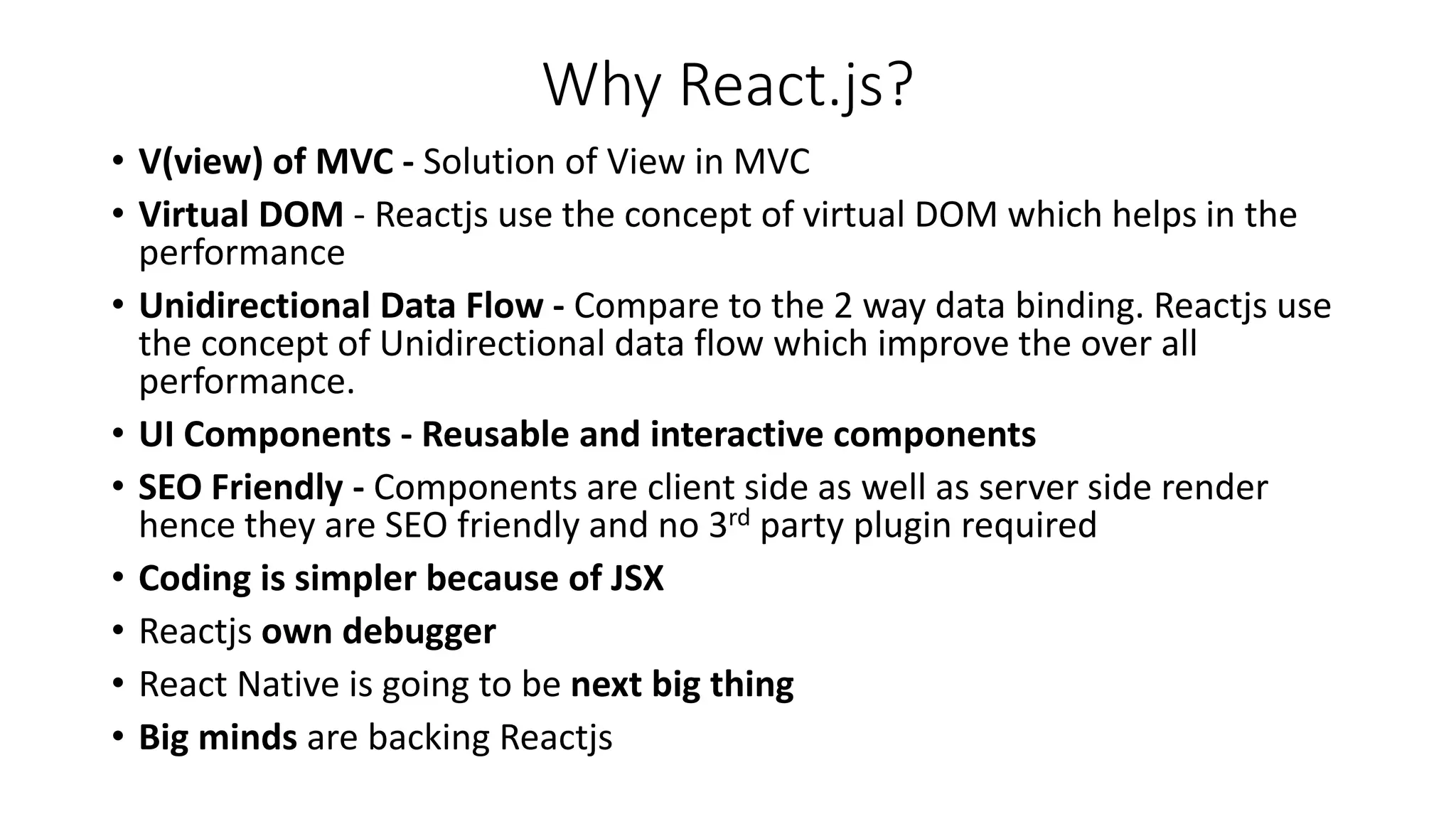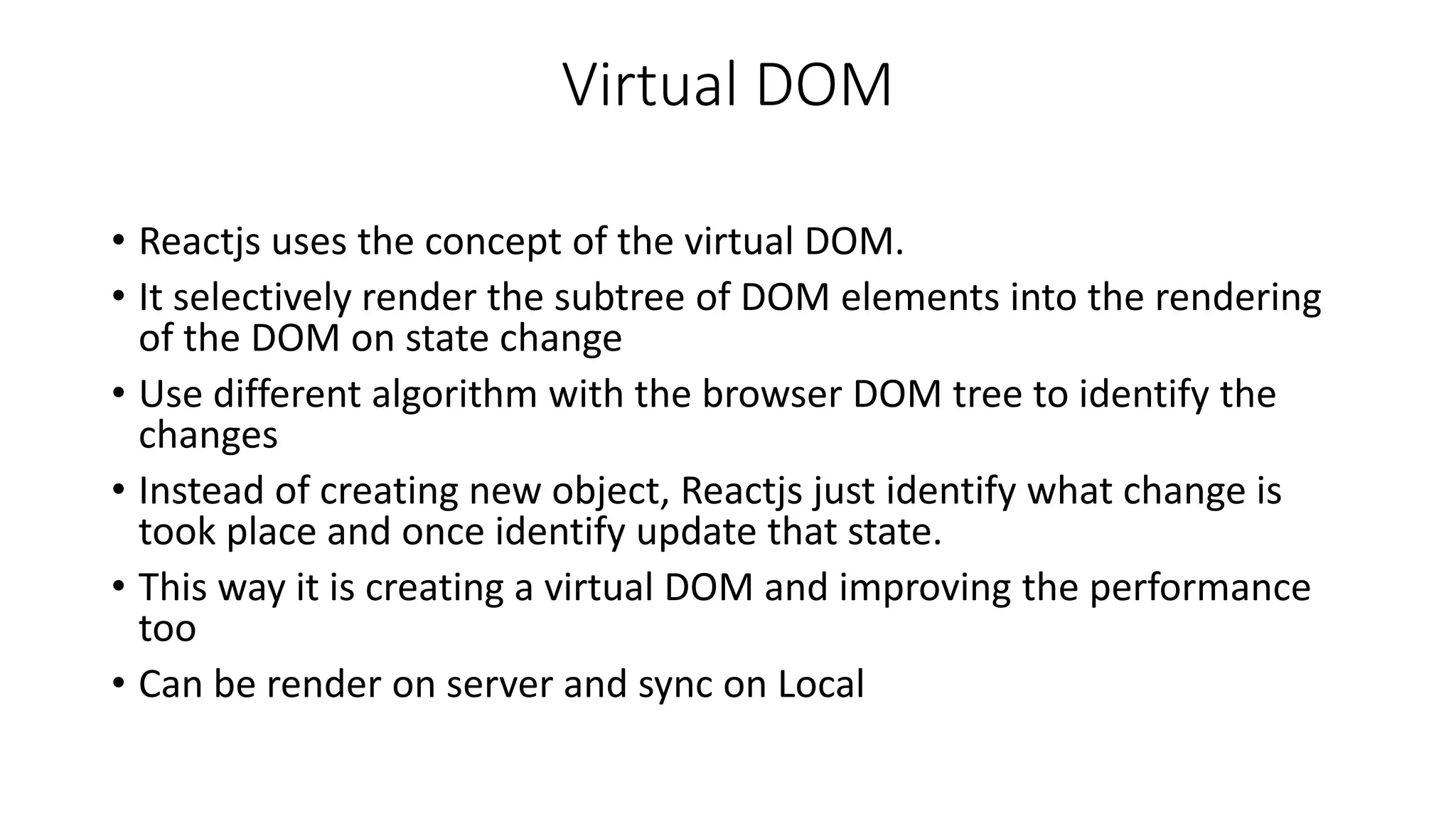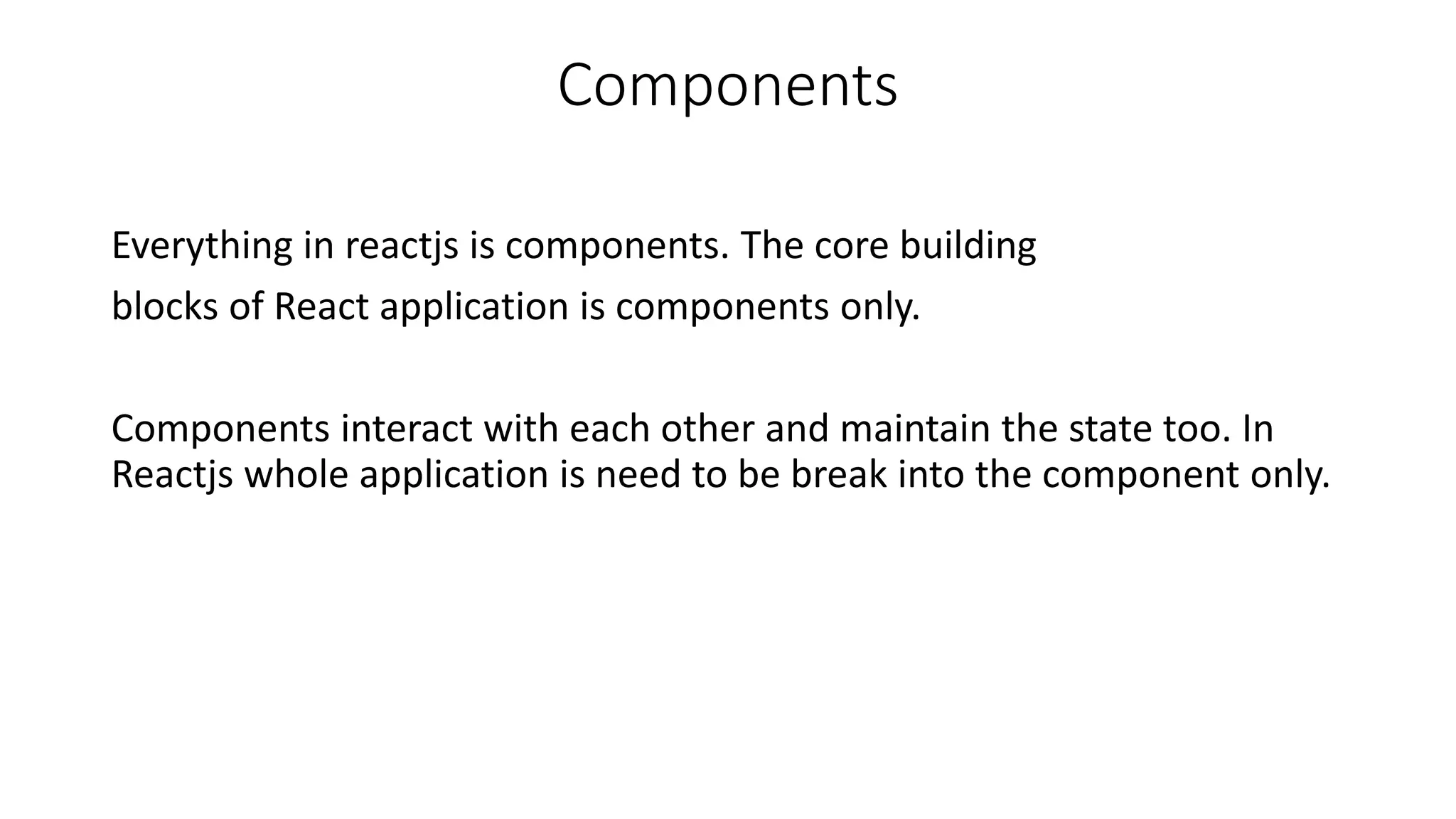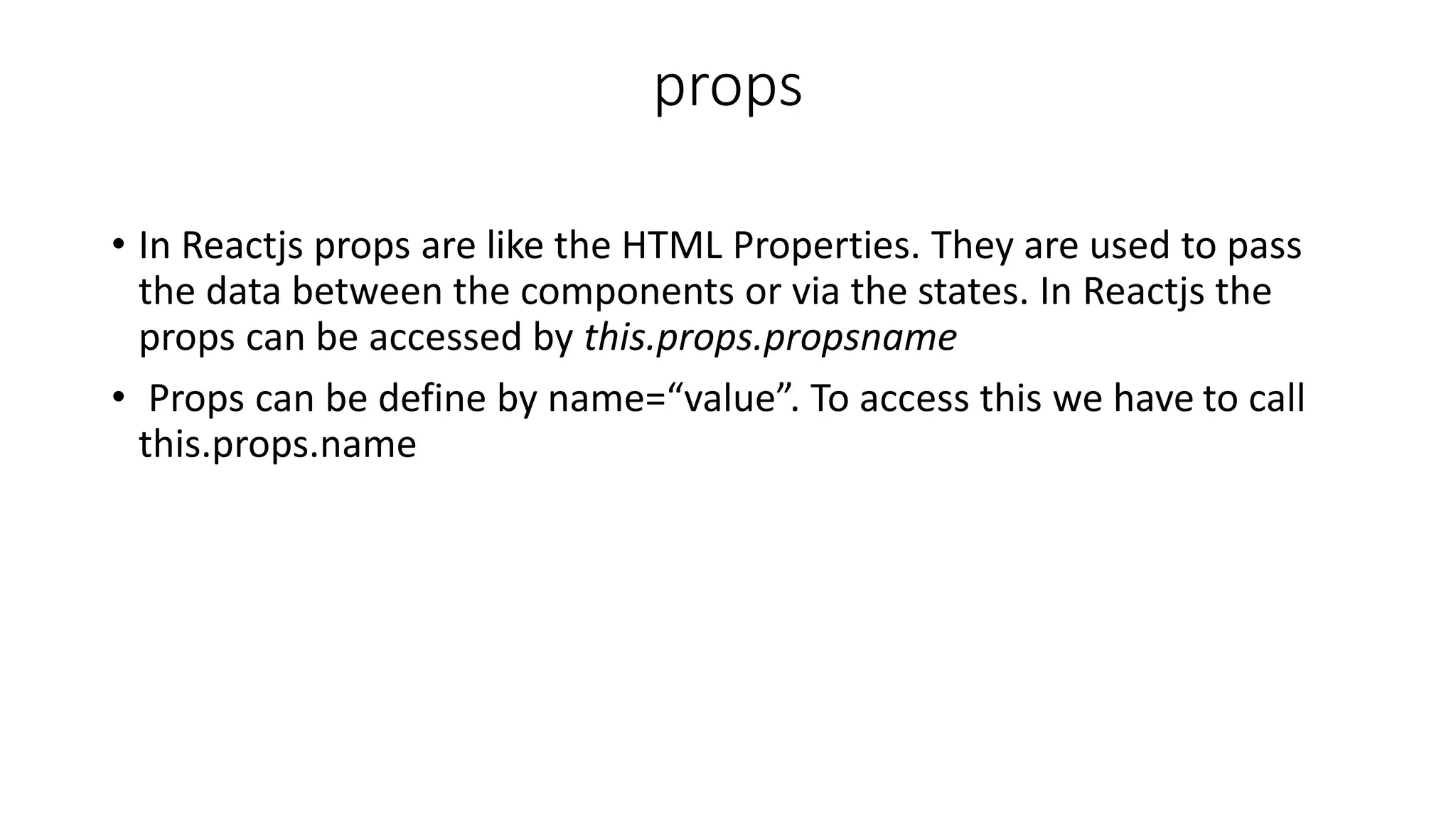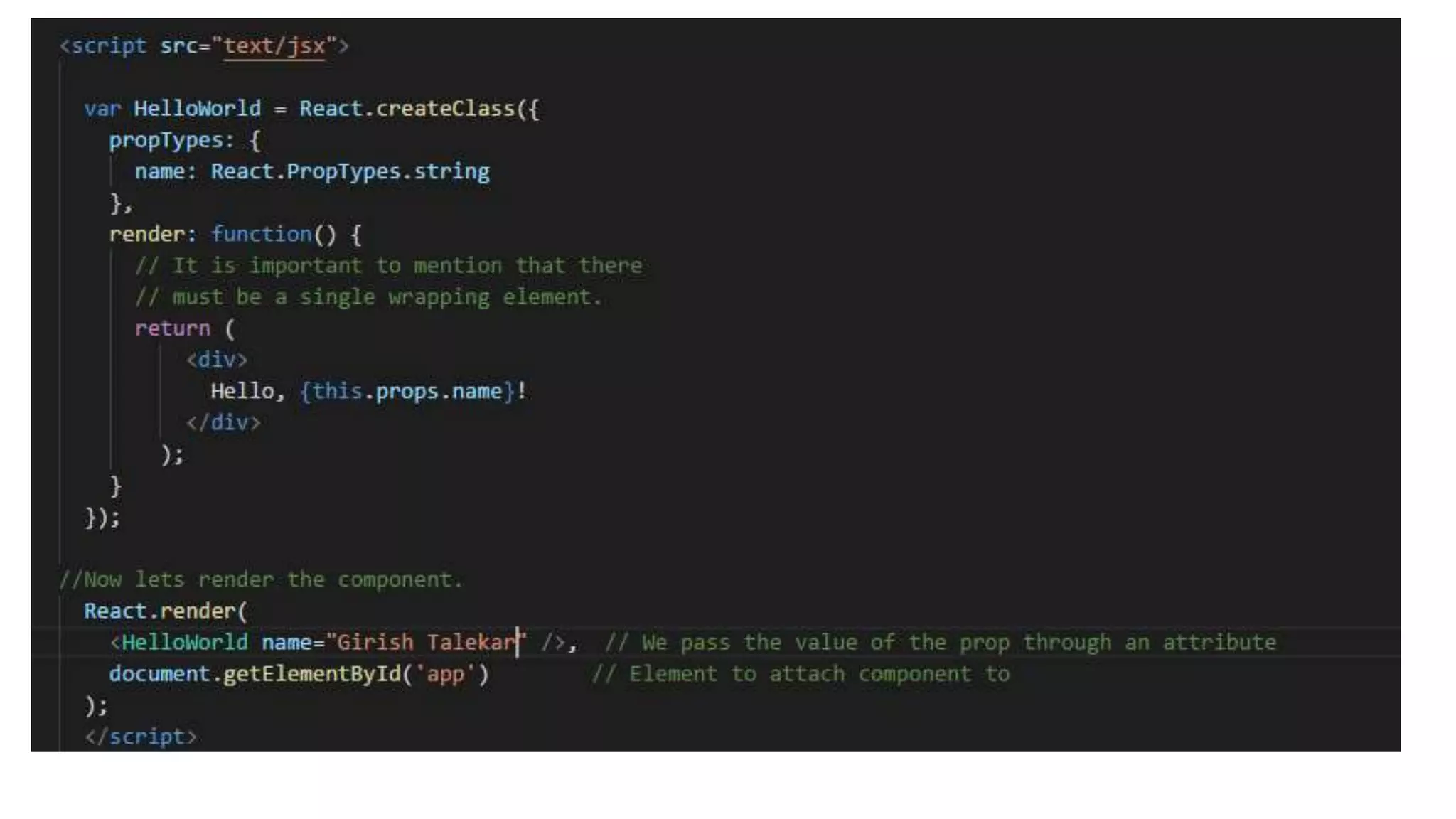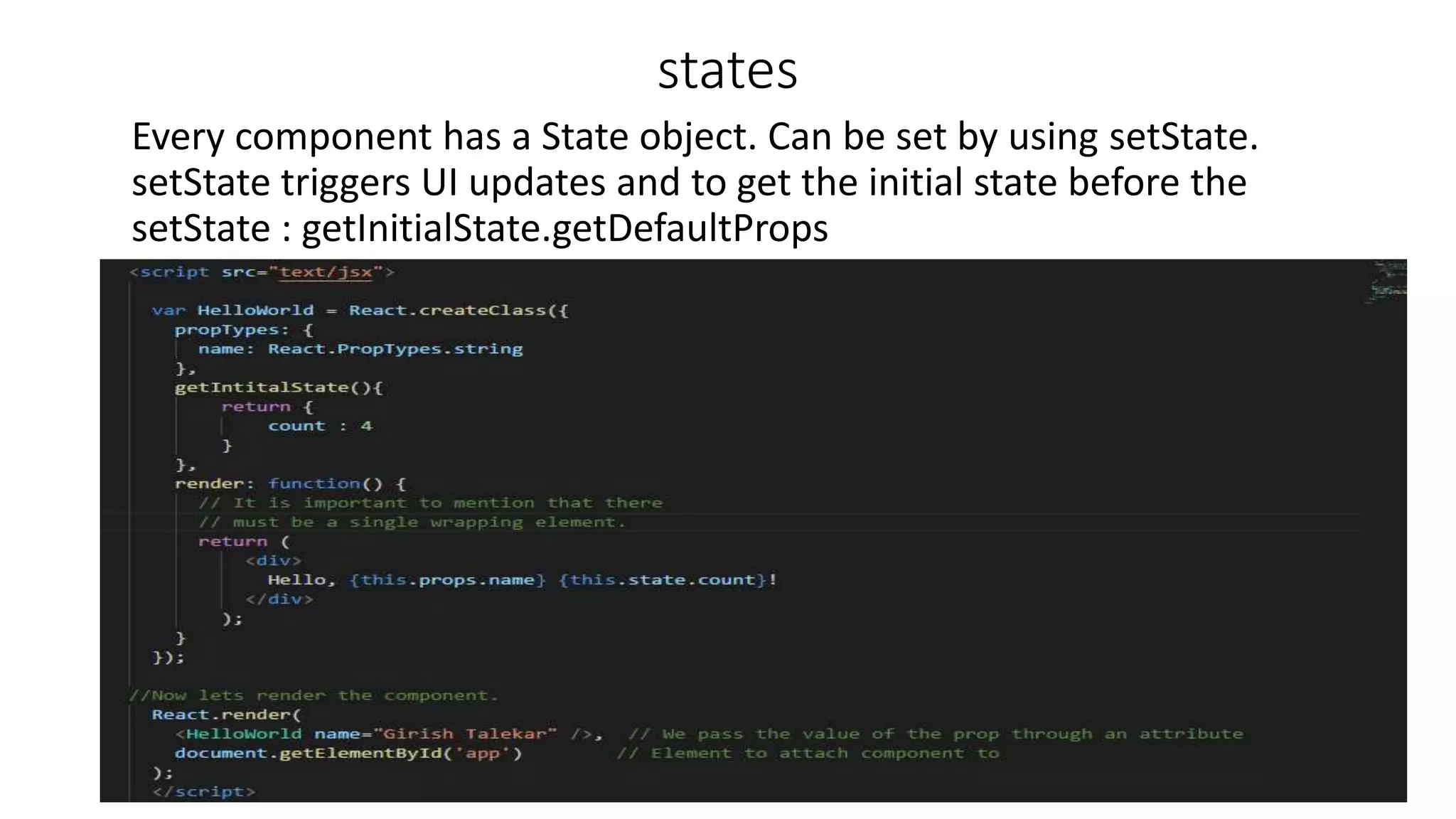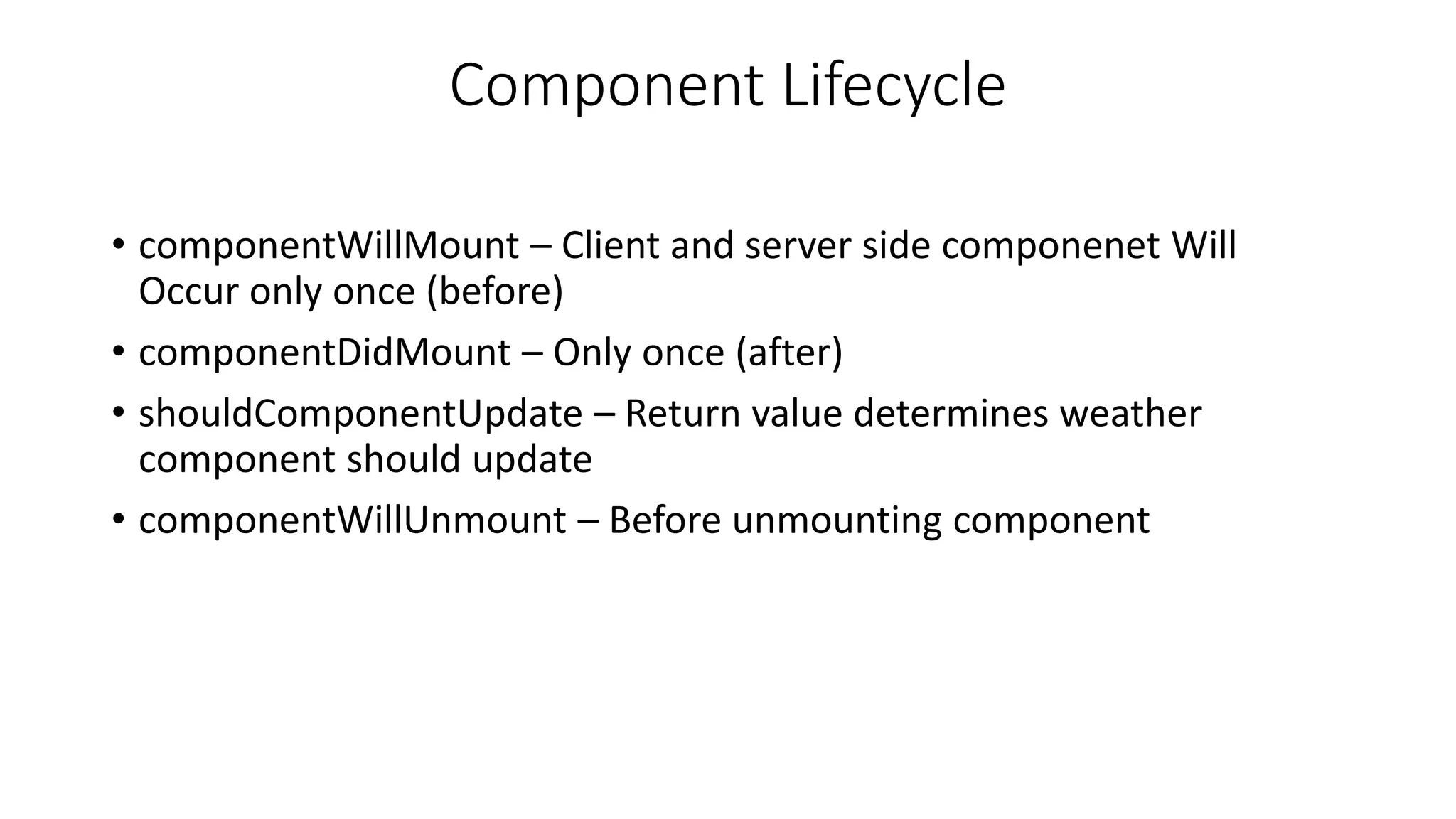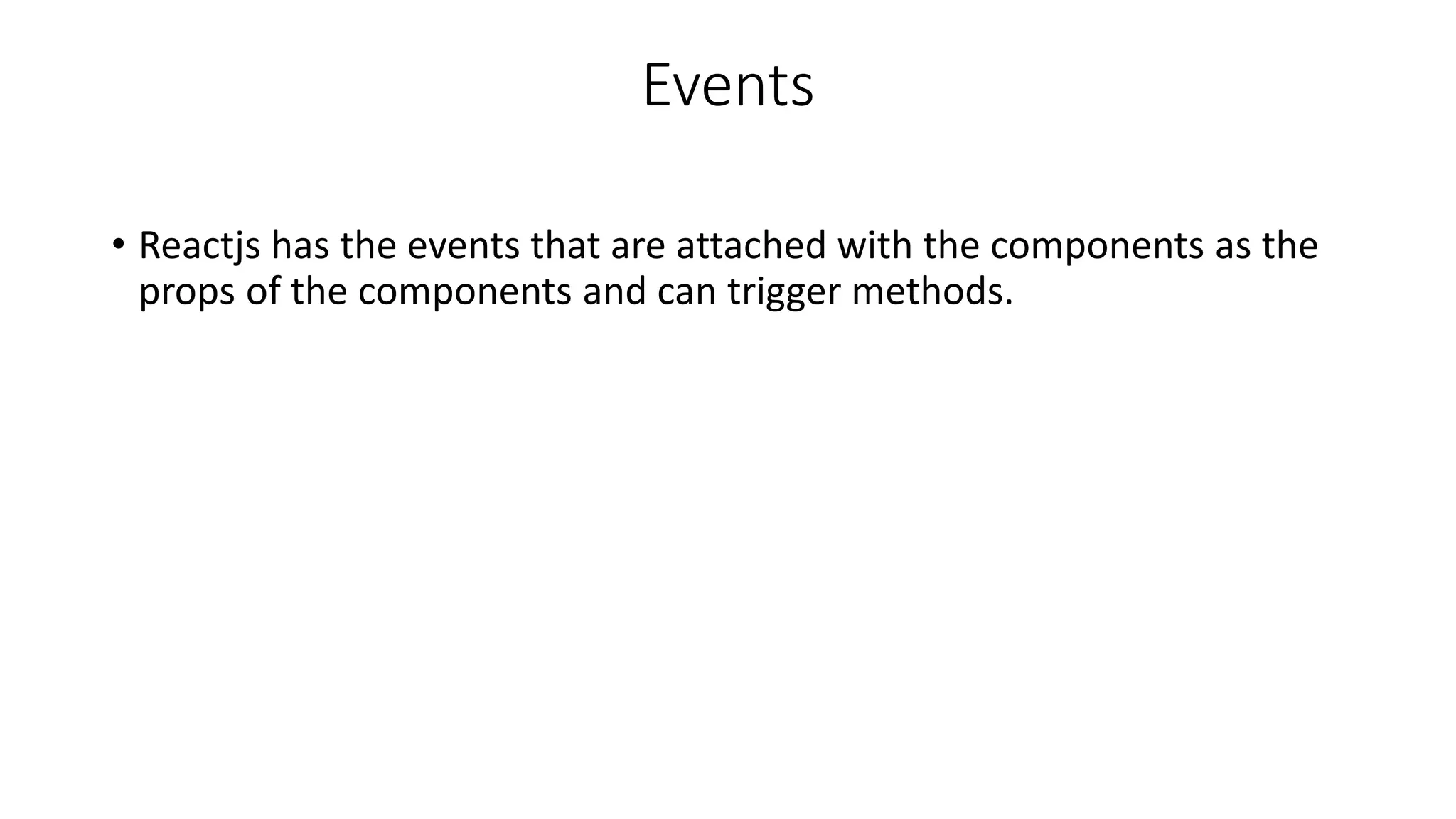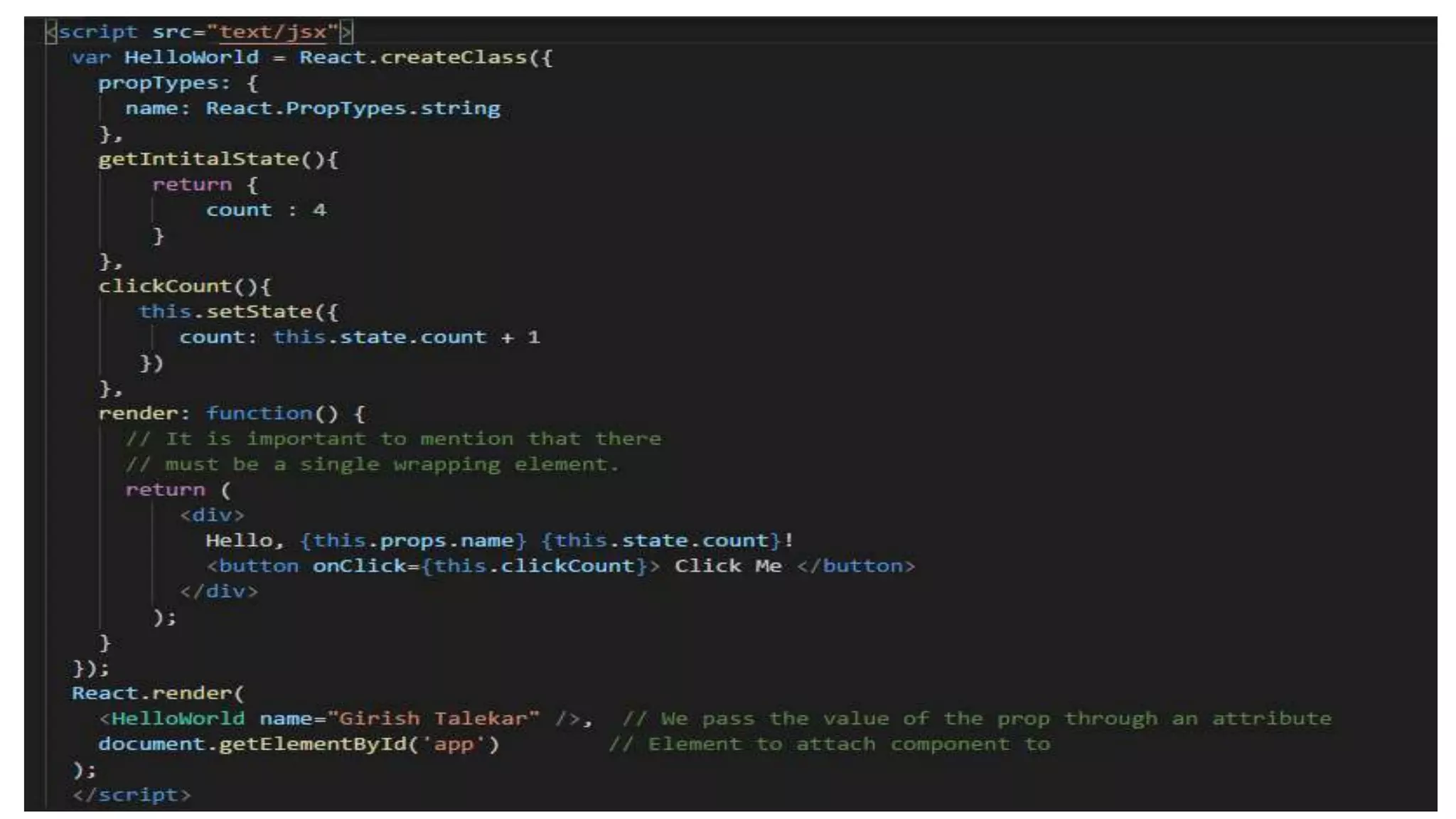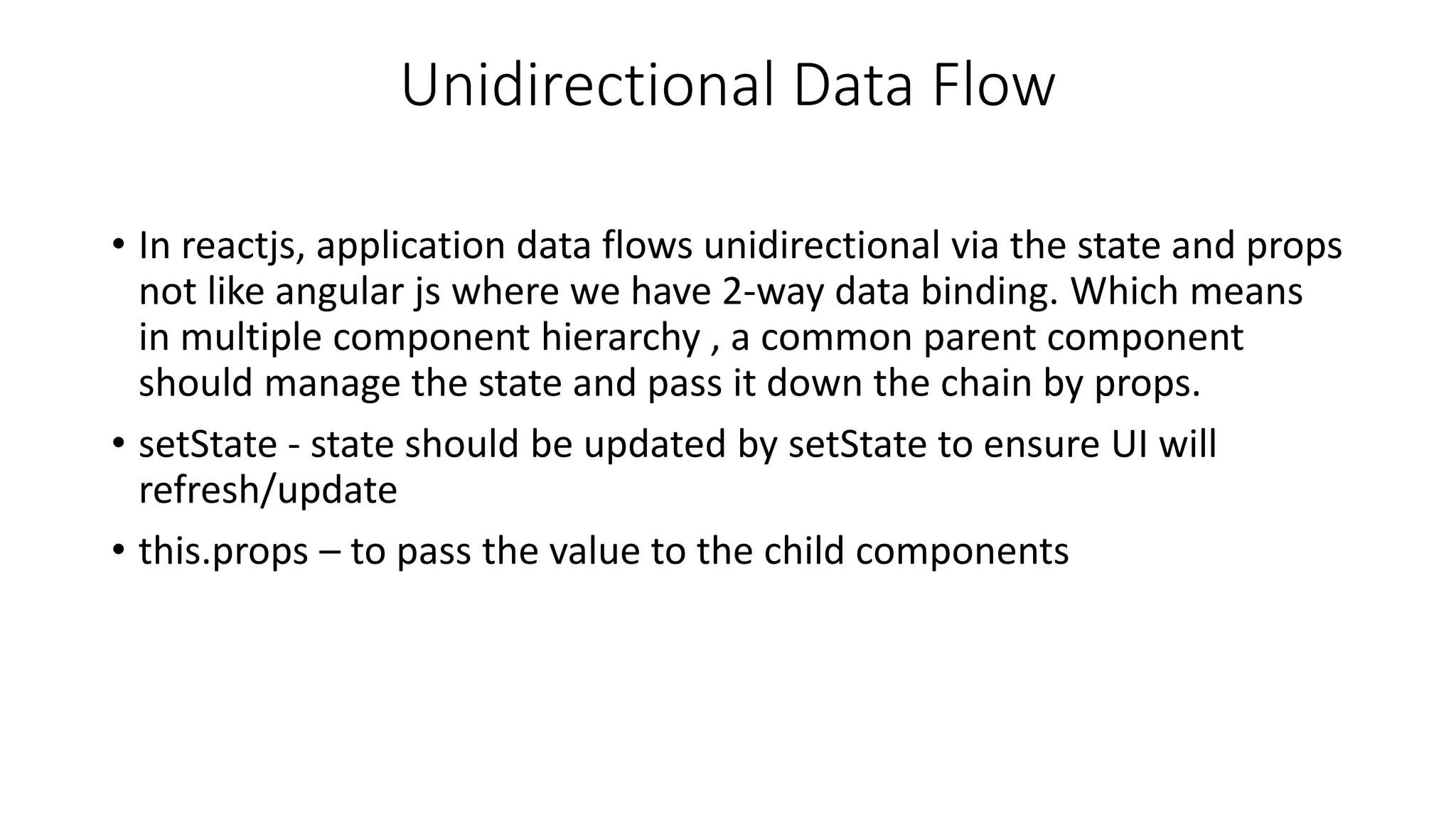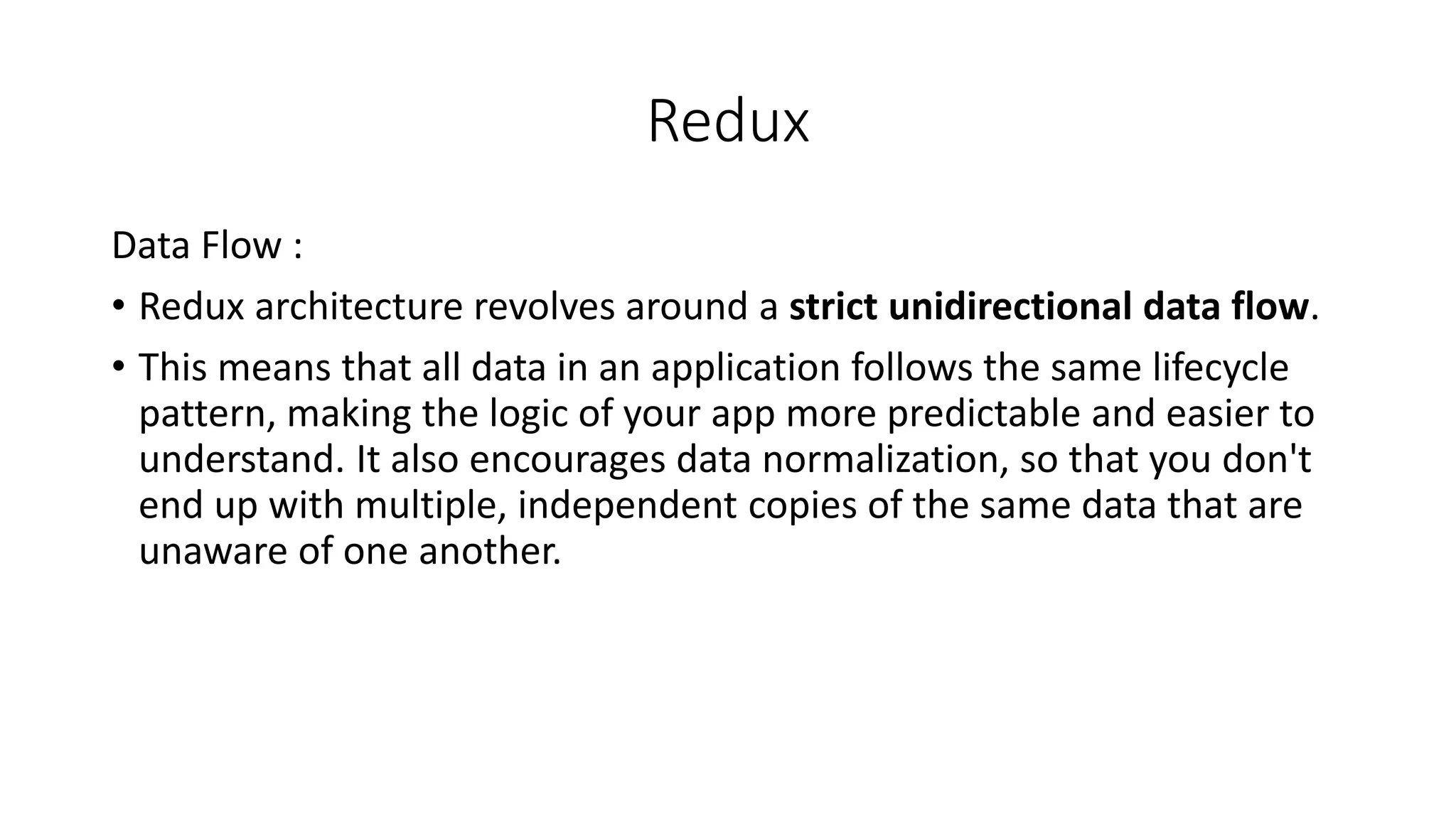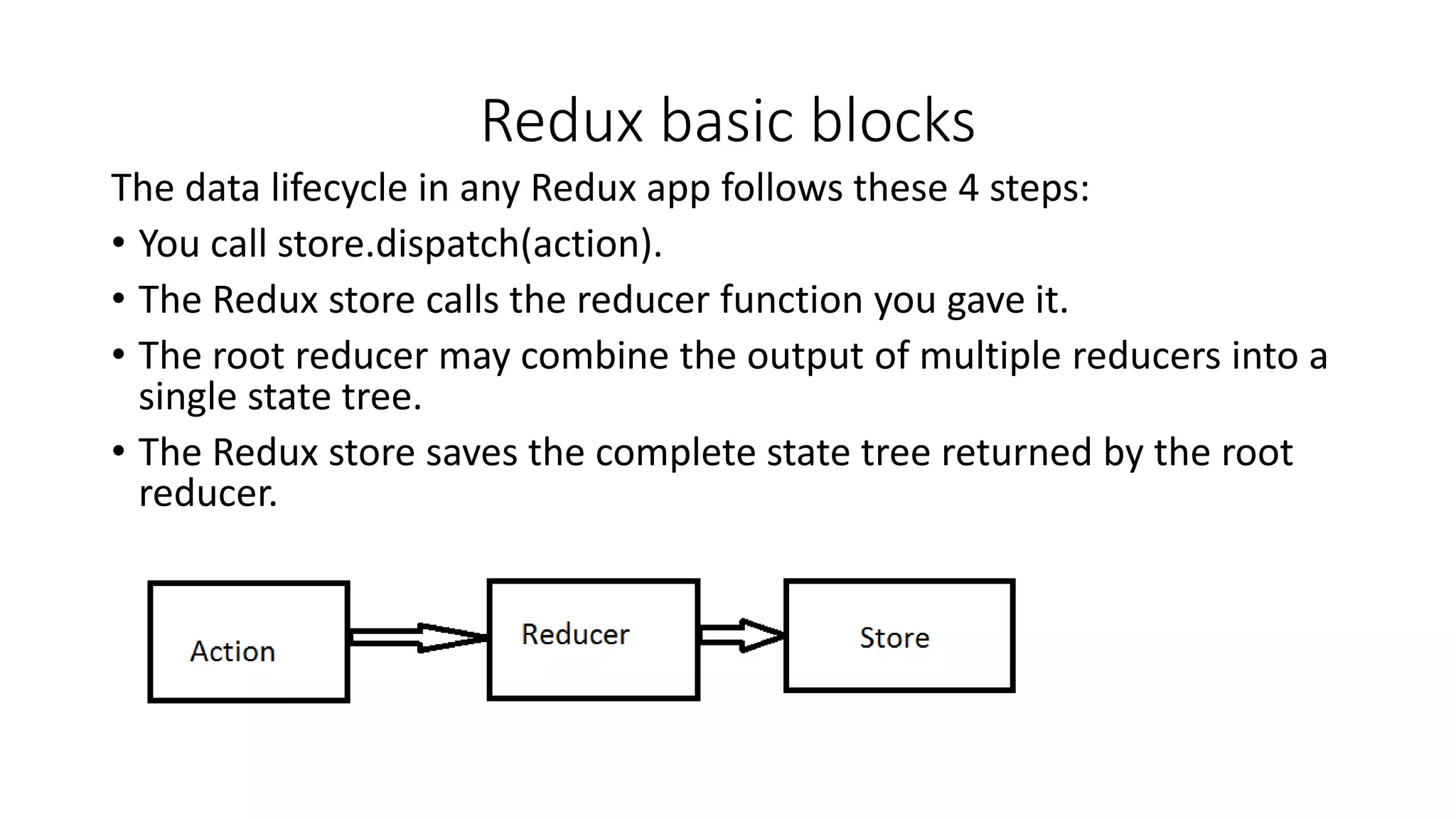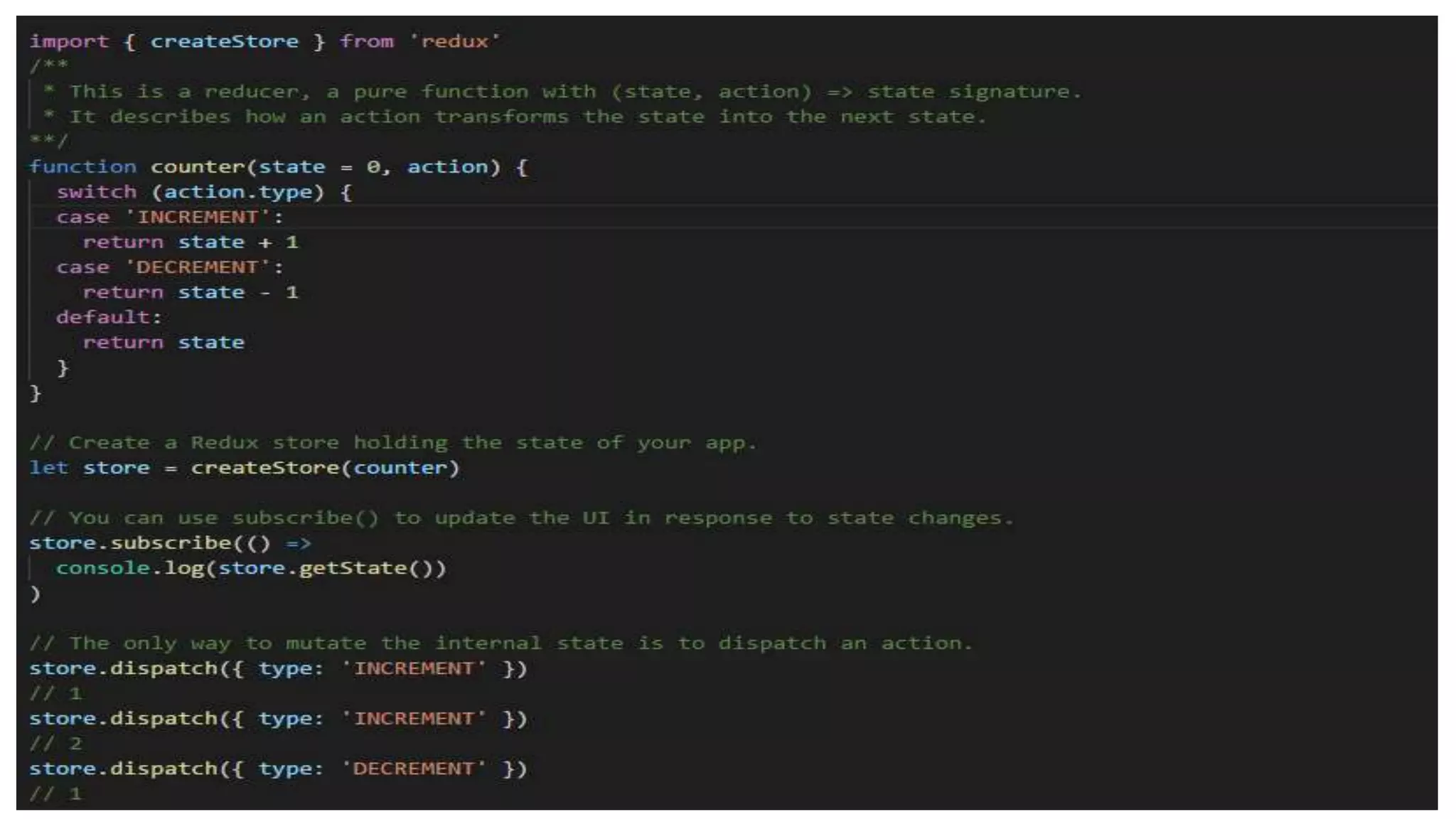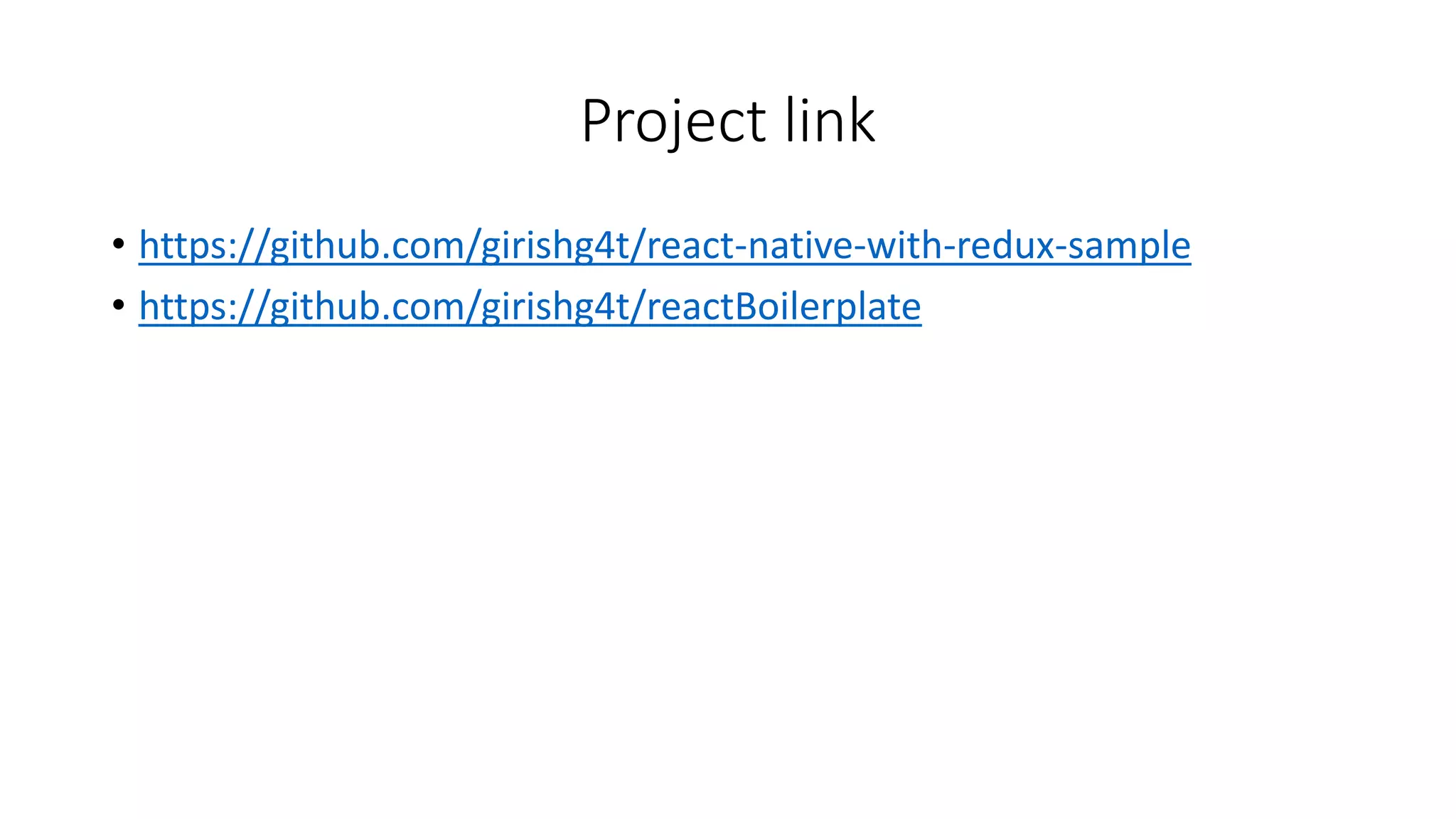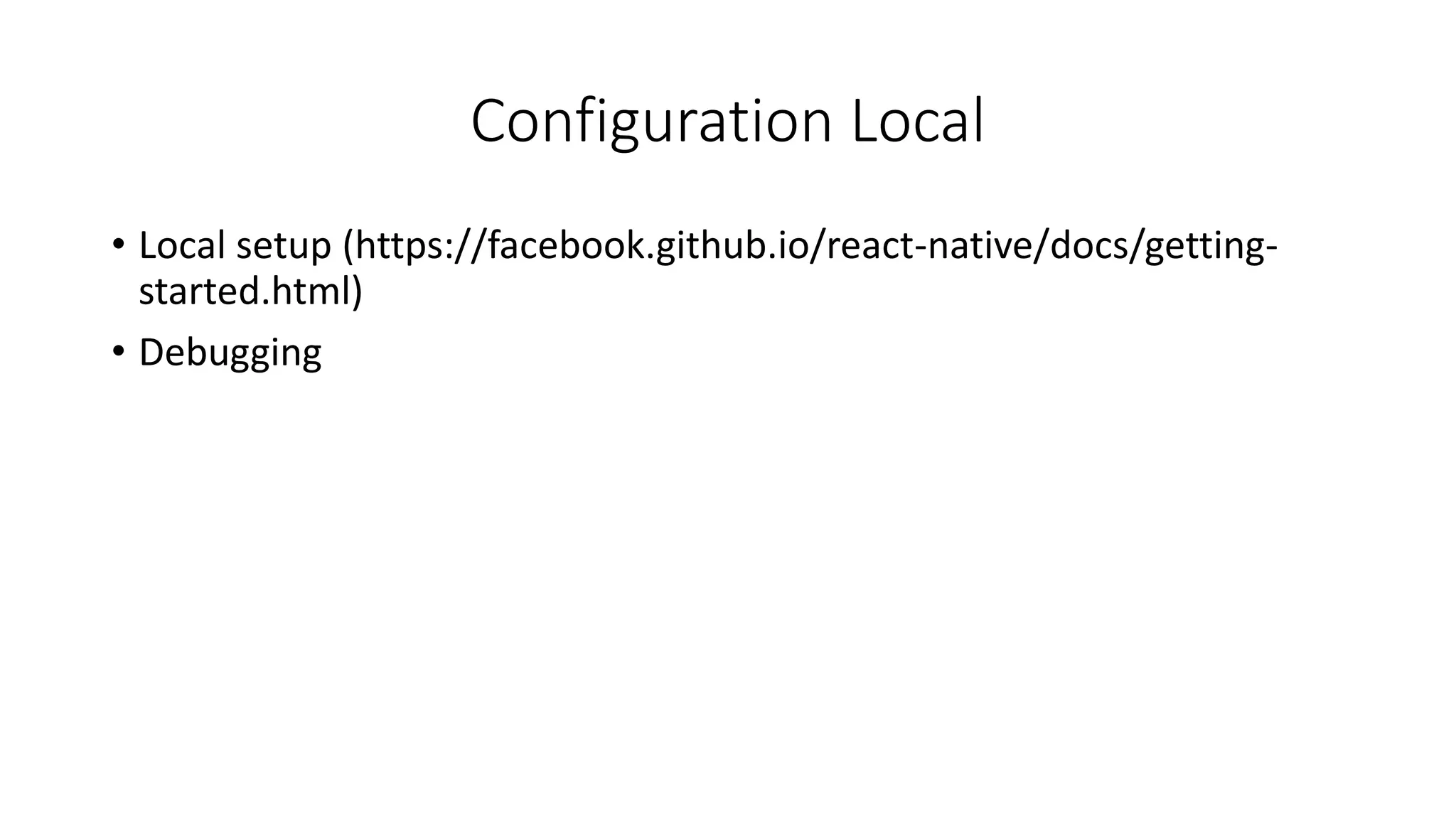React is a JavaScript library for building user interfaces using reusable components. The core concepts of React include JSX, components, unidirectional data flow, and the virtual DOM. Everything in React is components that can interact with each other and maintain state. Data flows unidirectionally via state and props from parent to child components. The virtual DOM selectively re-renders the UI when the state changes, improving performance. Redux follows a similar unidirectional data flow architecture, with data moving from actions to reducers to the store.


